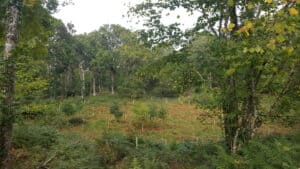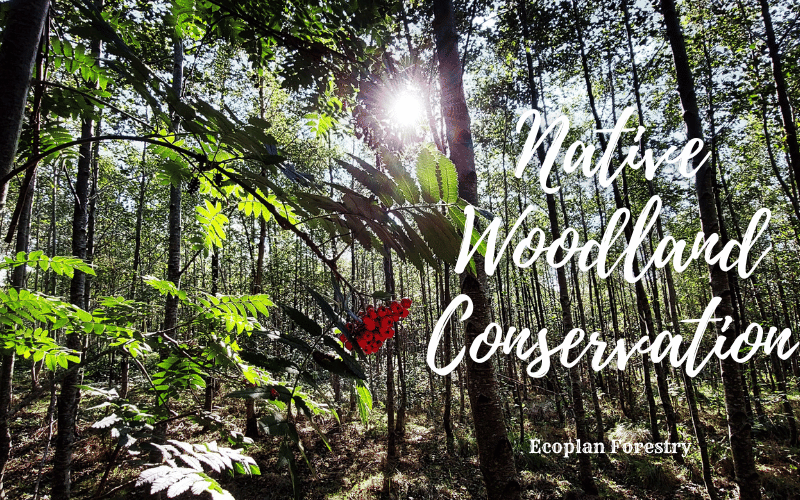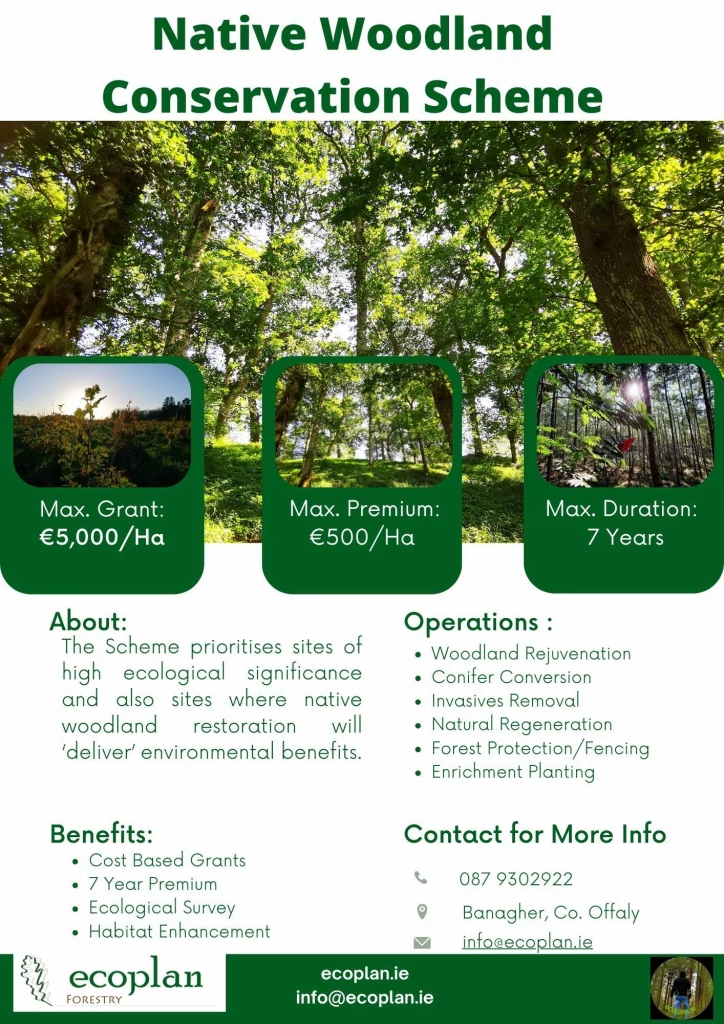Native Woodland Conservation in Ireland – Ecoplan Forestry
Protect, Restore, and Enhance Your Native Woodland
Ireland’s native woodlands are among our most valuable natural assets, and a national treasure – rich in forest biodiversity, steeped in history, and vital to our climate resilience. But they are also fragile and vulnerable. Invasive species, overgrazing, neglect, and climate change all pose serious threats. Ecoplan Forestry helps landowners take action to protect, enhance and future-proof these special habitats.
Whether your native forest is centuries old or relatively recent, it deserves thoughtful, professional care. Native Woodland Conservation isn’t just about leaving trees alone — it’s about active, expert-led management.

Why Native Woodland Conservation Matters
Our native woodlands are so much more than just their trees, and Conservation is far more than just protection – it involves active, thoughtful management. This might include removing invasive species, encouraging natural regeneration, thinning overcrowded stands, or enriching the woodland with suitable native species. Our goal is always the same: to restore the woodland’s natural structure, diversity, and resilience, while improving the range of habitats within it.
Financial Support Available – Native Woodland Conservation
We understand that funding plays a crucial role in native woodland conservation projects. As part of our commitment to supporting conservation efforts, we work closely with relevant authorities and explore grant opportunities to secure funding for eligible projects.
The Native Woodland Conservation Scheme, administered by the Forest Service, offers substantial financial support for landowners who commit to protecting and enhancing native woodland.
– Once-off Grant: €6,000 per hectare
– Annual Payment: €500 per hectare for 7 years
Total potential support: €9,500 per hectare
(Full Scheme details are available on the DAFM website)
How Ecoplan Forestry Can Help
We offer a complete service – from initial site visit and ecological assessment, through preparation of the Native Woodland Conservation Plan (NWCP), to project management and grant application. Our team works with you to design a realistic and effective plan tailored to your woodland and your goals.
Conservation Works May Include
– Removal of invasive species (e.g., laurel, rhododendron, sycamore)
– Deer fencing or deer control
– Re-Spacing to restore natural structure
– Enrichment planting with appropriate native species
– Habitat restoration for biodiversity
– Monitoring and adaptive management
Not Just for Designated Sites
You don’t need to own a nature reserve or have a Special Area of Conservation (SAC) to benefit from the Native Woodland Conservation Scheme. Many small or semi-natural native woodlands across Ireland are eligible for support — and even those that don’t qualify for grant aid can still benefit enormously from professional forest management. Every native woodland, regardless of its size or designation, has the potential to increase its ecological value, biodiversity, and long-term sustainability through thoughtful and expert stewardship. Managing these woodlands isn’t just good for nature — it’s good for the landowner too.
Why Choose Ecoplan?
We specialise in native woodlands, and have done since 2007 when Ecoplan was established specifically for this type of work. Our work is grounded in Ecoforestry and Sustainable Forest Management, but always guided by the landowner’s interests. We manage each woodland sensitively – balancing conservation outcomes with practical, long-term value.
If you own a native woodland – or think you might – we’d be happy to assess its potential and help you decide the best path forward. Contact us today.
Ready to contribute to Ireland’s native woodland conservation efforts? Contact Ecoplan Forestry Ltd today to learn more about our initiatives, the grant opportunities available, and how you can get involved. Together, let’s protect and preserve Ireland’s natural heritage for a sustainable and greener future.
If you’re considering establishing a new native woodland or looking for broader woodland consultancy services, you might also be interested in our pages on Native Woodland Establishment, Native Woodland Management or Wildlife Management.
See all the latest basics about the Scheme in this handy Infographic:



